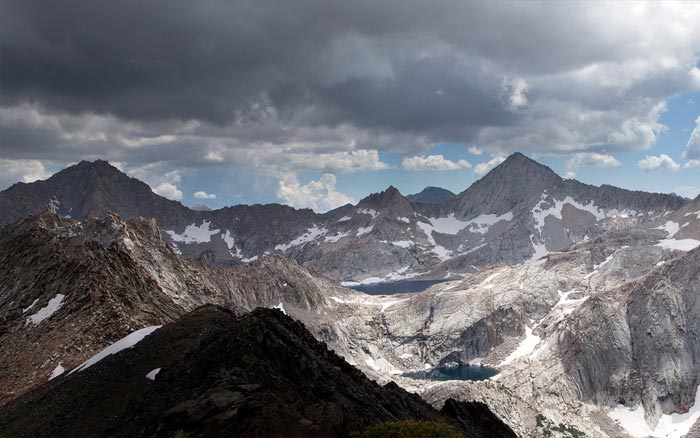Homer, Louisiana: Nuclear Nonsense
Tom Turner recounts a David-and-Goliath struggle between impoverished African-American people in rural Louisiana and a mighty international consortium of government agencies and private companies bent on siting a uranium enrichment plant in their midst.

Author Tom Turner recounts a David-and-Goliath struggle between impoverished African-American people in rural Louisiana and a mighty international consortium of government agencies and private companies bent on siting a uranium enrichment plant in their midst.
On June 9, 1989, there was a big shindig at the courthouse in Homer, Louisana, with free food and drink and a speech by Senator J. Bennett Johnston. The food was paid for by Louisiana Energy Services, a collection of public and private energy companies that stretched from Louisiana to Minnesota to England and Germany.
In his speech, Senator Johnston proudly announced that Homer had been chosen as the site of a new “chemical plant,” a facility that would bring in buckets of tax money and provide lots of jobs to Homer and the surrounding Claiborne Parish. Homer had once been the center of the Louisiana oil patch, but in the preceding decades had fallen on hard times. A new industrial facility was just what the parish needed, or so said Johnston.
What he didn’t say was that the “chemical plant,” was actually a facility for enriching uranium for use in nuclear power plants. He also didn’t say that the plant would generate a vast amount of dangerous radioactive waste that would stay on-site essentially forever, or that there would be little or no tax money coming to public coffers for at least ten years, or that the jobs would be for highly sophisticated engineers and the like, of whom there weren’t all that many living nearby.
He also didn’t say precisely where the plant would be situated, though that news was revealed soon after. The chosen site was a few miles out of town, straddling a road that connects two tiny African American communities called Center Springs and Forest Grove. When the residents of the two close-knit settlements learned that the road would be closed, they began to get concerned. And when the mostly white residents of Homer, many of whom had built retirement homes on nearby Lake Claiborne, learned that the plant would be built next to a creek that drains into their lake, they became alarmed as well.
A meeting was held at the Forest Grove church. Several whites attended, along with many residents of both Forest Grove and Center Springs. One of the Homer people had cast about for help and was put in touch with Michael Mariotte of the Nuclear Information Resources Service in Washington, D.C. He poked around a bit and offered to help. Sensing that a lawyer might soon be needed, he recruited Diane Curran, a lawyer in DC, who had done battle with the federal Nuclear Regulatory Commission in the past. Curran in turn enlisted the assistance of Nathalie Walker, who ran the Earthjustice office in New Orleans.
There was a least one other thing Senator Johnston had failed to mention in his courthouse speech, something Walker and Curran learned as they investigated what had led to the selection of the site near Homer. Of all the hundreds of potential sites LES looked at for its plant, Center Springs and Forest Grove were the blackest and among the lowest income. It was hard not to infer that the site had been chosen because local residents would be unlikely to resist effectively.
There, the calculation failed.
Walker and Curran filed an objection to the plant with the Nuclear Regulatory Commission. They challenged the need for the plant (no new nuclear plant had been built in the United States for many years). They challenged the financing for the facility, which looked wobbly. And they suggested that the site selection process was a violation of an executive order issued by President Clinton that required federal agencies ensure that their actions not unfairly impact communities of color.
The NRC proceedings dragged on for months. The formal hearing went on for a week. The plant’s opponents—who had formed themselves into a biracial group called CANT, for Citizens Against Nuclear Trash—sent busloads of residents every day the 50 miles from Homer to Shreveport, where the hearings were held, to observe. They organized support among the congressional Black Caucus and 182 environmental organizations from 18 countries. CBS News did a segment favorable to CANT. Two tiny communities in rural Louisiana had become big news.
The hearing’s star witness was Dr. Robert Bullard, who had specialized in the study of what he came to call “environmental racism.” He carefully demonstrated to the commissioners that the process used by the energy company to select a site for its plant amounted to institutional racism, which violated both the National Environmental Policy Act and the Clinton executive order.
Eventually the NRC rendered its verdict. The license application was denied for the reasons alleged by CANT’s lawyers. It was the first time the NRC had denied anything based on opposition from a citizen group, and it was the first time that environmental injustice had been cited as a reason for such a ruling.
The outcome was celebrated in Center Springs, Forest Grove, and Homer, but in fact it was just a beginning. Racial barriers in the town were breached. CANT people remained active, serving on the school board, the police jury (the local term for county board of supervisors), and the town council. Homer even elected its first black mayor.